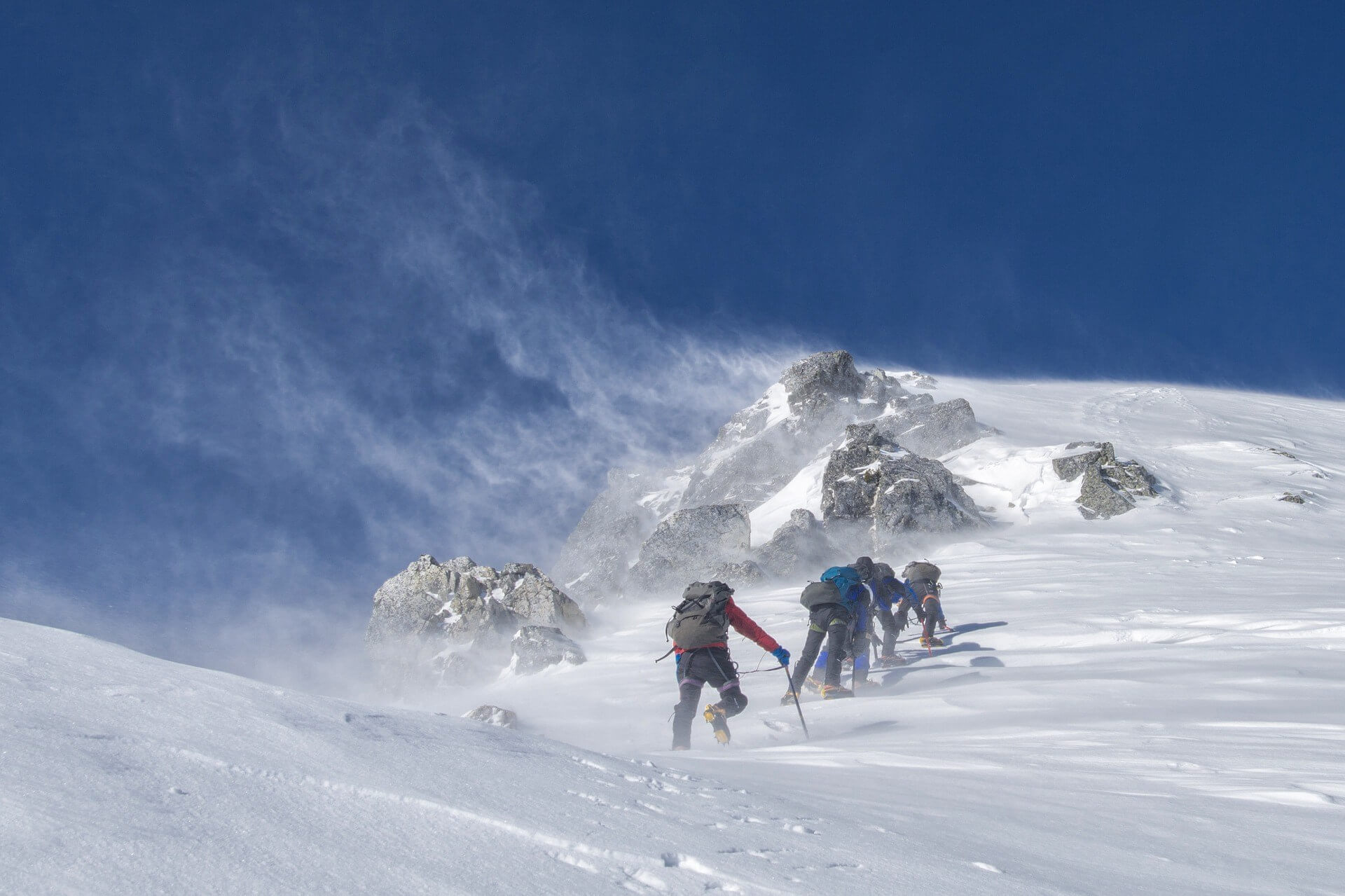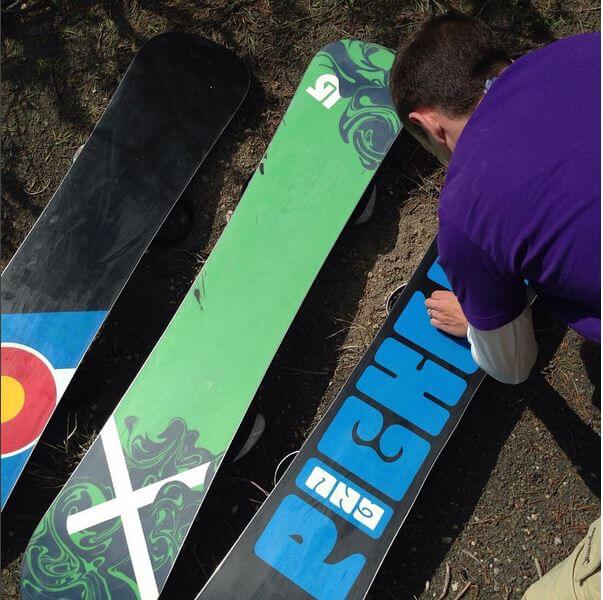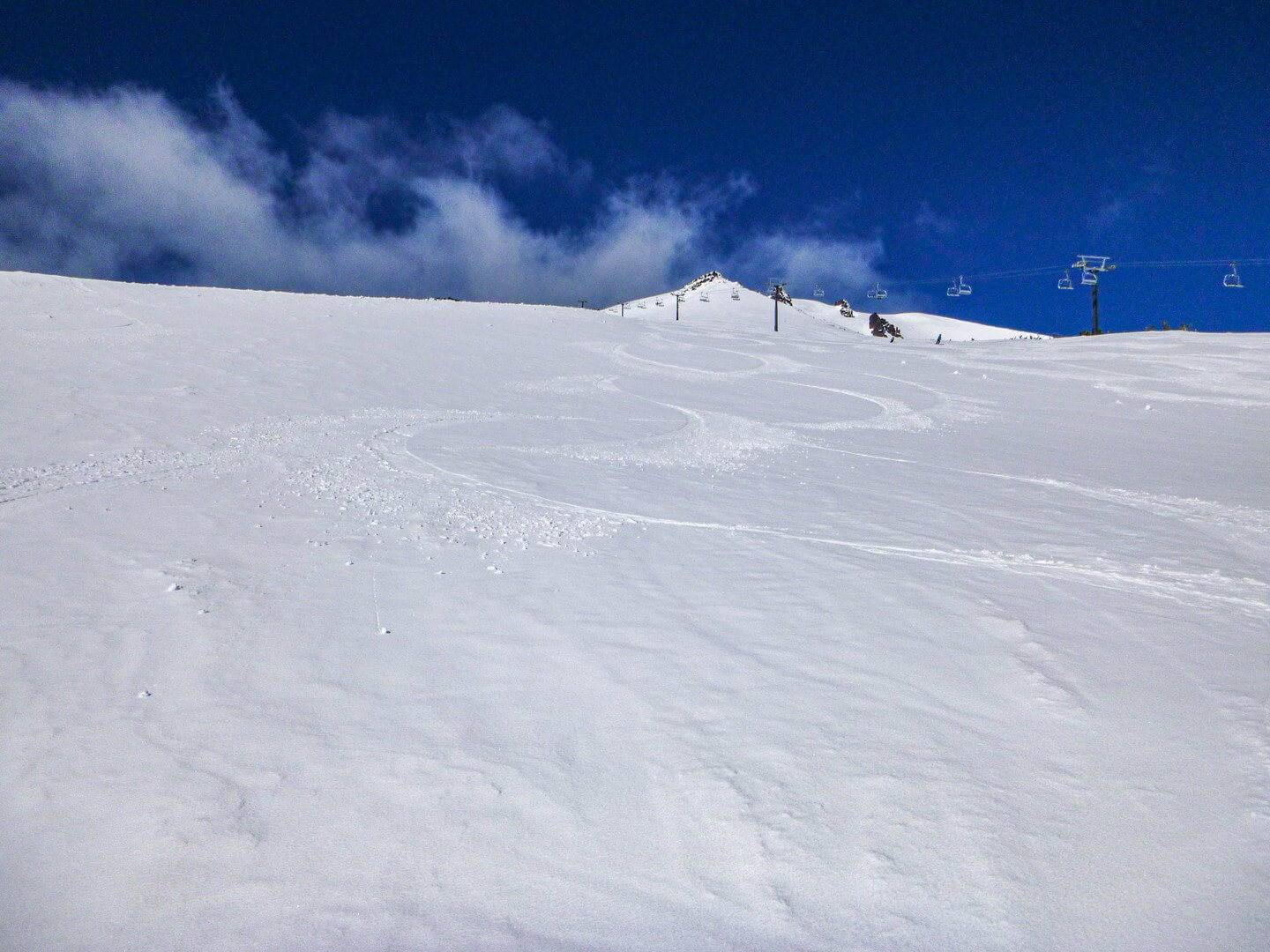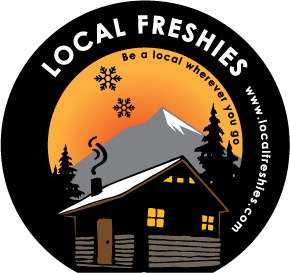The days are warm. The lodging is cheaper. And the crowds are long gone, but for some reason skiers & snowboarders give up on some of the best snow conditions of the ski season. This time of year something magical begins to happens to the snowpack and creates what is called “corn.” These little beads of snow get their name from the fact that they look like frozen corn kernels. To form this glorious surface, you need multiple sunny, warm days in a row plus cold, clear freezing conditions at night. If this Spring-like weather loop gets going, you’ll be hooked for life. We love it so much we’ve created an entire pocket guide on what to wear, what are the best spring skiing destinations, and more on our page – Everything You Need To Know About Spring Skiing… And Why It’s the Time Of Year To Visit.
Timing Is Everything

For perfect Spring turns, timing is essential. Get there too early and it will be as hard as an ice skating rink. Too late and it will be what is called mashed potatoes. They may be good on the dinner table, but for snow, it means a slushy mess, causing your skis or snowboard to stick like you’re riding a wave of Elmer’s Glue. Follow the Goldilocks’ mantra – the snow must be juuuuust right, and you’ll have a blast. If you want to learn the in’s & outs of spring skiing, what gear to bring, & why it’s our favorite time to go on a ski vacation, check out our comprehensive spring skiing guide:
Strategy On Skiing Late March To May
So, what time do you need to get there? Unfortunately, there is no set time, and it’s totally dependent on the weather. In the morning, scope out the temps from the past few nights and see how cold it’s been. If it’s hitting way below freezing (mid-20s), you should start later in the day, like around 11:00 am. If it doesn’t drop below freezing, you need to get going and be there as soon as the lifts start running.
As a rule of thumb, you can never be too early. If it’s still firm when you get there, hangout, grab a coffee or beverage of your choice, make new friends and enjoy the mountains while you wait for the snow to soften up. This is always the best plan, because if you miss your window by being late, you are done for the day!
Contributing Factors For Epic Corn Snow

There’s two things that soften the snow… either ambient air temperature or the sun’s radiation (i.e. sunshine) but there’s some things that slow down or put a halt on unlocking the snowpack. They are:
- Cloudiness
- Wind
- Air Temperature
- Sun Angle
Clouds, wind, air temps, and even precipitation affect the quality of great corn snow more than anything else! From a weather standpoint, the southern Sierra Nevada, where Mammoth Mountain is located, has the world’s best spring climate for corn snow: consistent clear weather on a deep snowpack with warm days and freezing nights. Simple variations like overcast skies or winds that kick-up can have a big impact on what should be a perfect Spring skiing day.
Cloudiness
When we talk about cloudiness with creating corn snow, we’re not talking full cloud cover either. If there’s even a thin layer of wispiness it could take a little more time to soften. And if the overnight sky wasn’t clear (i.e. cloudy), the snowpack didn’t freeze which means it will start getting softer earlier in morning. Not ideal, but still fun.
Wind

Personally, this is the one that’s the most painful to bear. The air temperature is in the upper 40’s, and there isn’t a single cloud in the sky… it SHOULD be corn snow but it isn’t. Instead, the winds are gusting up to 30 mph removing the solar radiation from the surface and making it as firm as the Iron Curtain during the Cold War. The good news is if this happens in late May or June when it’s 60 degrees outside, it’ll postpone the stickiness for later in the day or hold it off entirely.
Air Temperature
Pretty straight forward. You NEED it to get above 32 degrees Fahrenheit during the day and below it at night. The more extreme temperature variance, the more likelihood you’ll get some amazing conditions.
Sun Angle
The final key ingredient to make things perfect is sun angle. If it’s too low like you find during mid-winter, the corn snow won’t form correctly. Earlier in the spring, it’ll take a bit longer for it to soften. This means you may be waiting until noon or later. Later on, like May or June, you might have to show up around 9:30 am or earlier.
Aspect

To “harvest” the best corn snow, you also need to understand the type of terrain the mountain has. Aim for trails, like open bowls, that are away from any vegetation. Big open faces are the best Spring spots. Trees and bushes have falling debris causing the quality of snow to degrade quickly into a consistency like mashed potatoes. When you start your day, try to find the trails that are South facing and open to the sky. These runs will soften the quickest since they get most of the early sun. If the snow is softened up and perfect to your liking, keep hitting those South facing runs as long as you can.
Once the southern faces have been “reaped”, time to head over to East faces and then West facing trails. Finally, finish up the day on North facing runs since these will be the last to soften. You will be navigating across the mountain, following the sun for the perfect corn snow all day.
Watch The Weather & Skip Lunch
There is a window for these conditions. Once the snow is prime, skip lunch or take a late lunch and get it while it’s good! Corn will only last for a few hours. It’s important to watch the weather and see what’s happening the night before to get the timing right. Locals knowledge can also be a great help.
Mountain Weather Is … Mountain-y
Unfortunately, no matter how much research and analysis you’ve done, sometimes the mountains say “no!” On cooler days, the snow may not soften at all. It’s even possible to ski packed powder in late March/early April when the air temps are in the upper 50’s. It all depends on the big orange fireball in the sky!
Get Your Equipment Ready

Just like fresh powder snow, your equipment needs to be ready for spring conditions as well. If you’re going to be doing a lot of spring skiing and have some extra cash to spend, get your base surface structured so water quickly channels away. This is a great way to extend your day and not get frustrated by “sticking” as you ride. This trick allows you to ride wet snow more smoothly. If you don’t want to spend the money, at least switch to a warm weather wax (above 32° F). For the final touch, use a bristle pad to make 45° angle patterns down your skis or snowboard so that the water doesn’t flow the entire length of the board. All these tricks will help reduce the friction. If you want to learn more on how to fight off the stickiness, check out our full write-up on how to combat sticky snow:









Can you explain this a bit further? This doesn’t make sense to me. Thanks
“And if the overnight sky wasn’t clear (i.e. cloudy), the snowpack didn’t freeze which means it will start getting softer earlier in morning“
Kevin,
Great question. What happens during the spring in places like Mammoth, Mt Bachelor, or other spring skiing destinations that are known for creating corn snow a clear sky will let the the heat dissipate away from the deep snowpack. This then allows it to freeze (sometimes even when it stays above freezing) and dry out the snow that’s been melting during the day.
On the other hand, if it’s cloudy overnight this normally keeps the warmth in the snowpack. Even a thin overcast layer of high clouds can cause the snow to not re-freeze completely. This is because the clouds act like a blanket, insulating the snow and holding in the heat. Actually, what is going on is, at night the out-going radiation from the surface of the snow gets re-radiated back to the earth’s surface. As this radiation is reflected back down to earth by the cloud bases, it inhibits a solid freeze.
Hope that gives a bit more clarity. 🙂
Hi Alex. Thanks for the prompt reply. Yes definitely clarifies, makes sense now. I never took that into consideration before. This will help me predict the conditions better this season. Cheers.